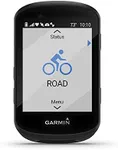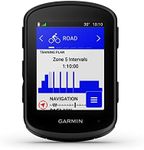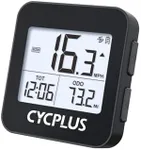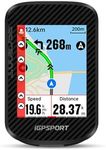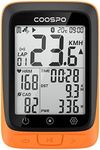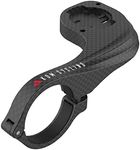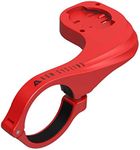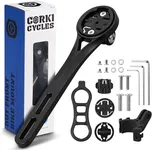Buying Guide for the Best Mtb Bike Computer
Choosing the right MTB (Mountain Bike) computer can significantly enhance your biking experience by providing you with valuable data and insights. A bike computer can help you track your speed, distance, and even navigate trails. To make the best choice, you need to consider several key specifications that will determine how well the device meets your needs. Here are the most important specs to consider and how to navigate them.GPS AccuracyGPS accuracy is crucial for tracking your routes and providing precise data on your location, speed, and distance. High accuracy ensures that the data you receive is reliable and useful. GPS accuracy can vary, with some devices offering basic GPS, while others provide advanced multi-satellite systems like GLONASS or Galileo. If you often ride in dense forests or mountainous areas, opt for a bike computer with higher GPS accuracy to ensure consistent performance.
Battery LifeBattery life determines how long your bike computer can operate before needing a recharge. This is especially important for long rides or multi-day trips. Battery life can range from a few hours to several days. If you typically go on short rides, a bike computer with shorter battery life may suffice. However, for long-distance or multi-day adventures, choose a model with extended battery life to avoid running out of power mid-ride.
Display Size and ReadabilityThe display size and readability affect how easily you can view your data while riding. Larger displays are easier to read but may add bulk to your handlebars. Smaller displays are more compact but can be harder to read, especially in bright sunlight. Consider your eyesight and the typical lighting conditions of your rides. If you need to quickly glance at your data without straining your eyes, opt for a larger, high-contrast display.
ConnectivityConnectivity options, such as Bluetooth and ANT+, allow your bike computer to pair with other devices like heart rate monitors, cadence sensors, and smartphones. This can enhance your riding experience by providing more comprehensive data and enabling features like live tracking and notifications. If you use multiple sensors or want to sync your data with apps, choose a bike computer with robust connectivity options.
Mapping and NavigationMapping and navigation features help you find your way on unfamiliar trails and plan your routes. Some bike computers offer basic breadcrumb trails, while others provide detailed maps and turn-by-turn navigation. If you frequently explore new areas or participate in long-distance rides, a bike computer with advanced mapping and navigation capabilities will be beneficial. For casual rides on familiar routes, basic navigation features may be sufficient.
Durability and Water ResistanceDurability and water resistance are important for ensuring your bike computer can withstand the rigors of mountain biking. Look for a device with a rugged build and a high water resistance rating (e.g., IPX7 or higher) to protect against rain, mud, and accidental drops. If you often ride in harsh conditions or challenging terrains, prioritize a bike computer with high durability and water resistance to ensure it lasts through your adventures.
Data Tracking and AnalysisData tracking and analysis features allow you to monitor your performance and progress over time. This can include metrics like speed, distance, elevation, heart rate, and power output. Advanced models may offer more detailed analysis and integration with training apps. If you're serious about improving your performance, choose a bike computer with comprehensive data tracking and analysis capabilities. For casual riders, basic tracking features may be sufficient.


